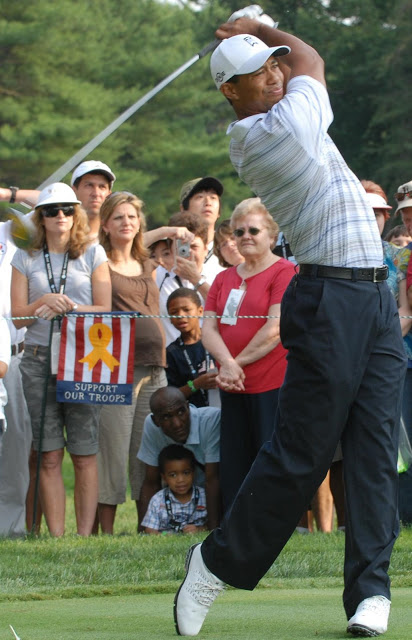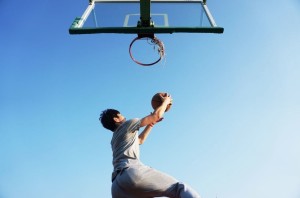Posted on
February 26, 2018 by
Joe Fleming
 The ancient Greek philosopher Heraclitus probably first said that “the only constant in the universe is change.” This phrase definitely applies to sports injuries, at least to some extent.
The ancient Greek philosopher Heraclitus probably first said that “the only constant in the universe is change.” This phrase definitely applies to sports injuries, at least to some extent.
Some people still remember the 1992 NBA All-Star game which featured the return of Magic Johnson. A few months earlier, he had retired after announcing he was HIV positive. Several other players, including Karl Malone, openly expressed misgivings about Johnson’s return and their own risk of contracting AIDS. We now know these fears were foolish, but they were very real at the time.
Fortunately, deadly sexually-transmitted diseases like AIDS are not a problem on most sports teams. But sports injuries are a constant concern. In some cases, the treatment approach has changed significantly in recent years; in other cases, not so much.
Football and Concussions
Head injuries have been an issue in football ever since William Harvey laced up the cleats for Penn in 1894. “In a scrimmage behind the goal I was knocked insensible, but recovered in about fifteen minutes,” he later wrote. For the next hundred years, every player who received a head injury in football got basically the same treatment: a few plays off, some smelling salts, and a cursory “how many fingers am I holding up” medical exam.
Things began to change in 1994 when then-NFL Commissioner Paul Tagliabue ordered league doctors and other scientists to examine the problem more closely. Today, no one is really sure how the NFL and other football leagues should handle head injuries. Players want to play, coaches want to win, and fans want to see lots of action, but a player’s long-term health is at stake. There’s a balance there somewhere.
New innovations should help improve treatment protocols. For example, the Food and Drug Administration recently approved a concussion diagnosis blood test. Very soon, this test could eliminate the guesswork involved in this area. Read the rest of this entry →
Tags: Sports Injuries
Category
Football, Health & Fitness, NFL, Sports Fitness, Sports Medicine
Posted on
February 13, 2018 by
Dixie Somers
 Participation in sports is a great way to stay active and healthy, promote strong interpersonal relationships, and even develop leadership qualities that last a lifetime. For all the good things sports can provide, though, they do come with their fair share of risks. One of the risks involved in sports is dental injuries such as busted or knocked-out teeth. Avoiding these types of injuries should be an important part of any preparations for those involved in sports, as it can help ensure a lifetime of good oral health.
Participation in sports is a great way to stay active and healthy, promote strong interpersonal relationships, and even develop leadership qualities that last a lifetime. For all the good things sports can provide, though, they do come with their fair share of risks. One of the risks involved in sports is dental injuries such as busted or knocked-out teeth. Avoiding these types of injuries should be an important part of any preparations for those involved in sports, as it can help ensure a lifetime of good oral health.
Practice Well
Sometimes, dental injuries in sports, just like car accidents on the road, are unavoidable. At the same time, just like you can help prevent a car accident by practicing good driving habits, you can give yourself a better chance of avoiding a dental injury by regularly practicing the sport you’re involved in. Solid practice allows better understanding of the fundamentals of the game you’re playing, as well as a higher proficiency in the more technical aspects. Together, this allows you to pay more attention to the players around you, rather than on yourself, aiding you in avoiding collisions that can lead to dental injuries.
Wear the Correct Gear
To be sure, wearing a mouth guard isn’t the most enjoyable experience. At times, it can be big, bulky, and uncomfortable, not to mention feeling totally unnatural. However, as unpleasant as it may be, ensuring you are always wearing your mouth guard is far and away the best method for preventing dental injuries in sports. If this is something you struggle with, it might make sense to make putting in your mouth guard part of your practice regimen, just so it will become an ingrained habit that is unlikely to be broken. That way, when game day arrives, and you’re thinking about a thousand other things, you won’t forget to put that mouth guard back in after every timeout. Read the rest of this entry →
Tags: Sports Injuries
Category
Sports Medicine
Posted on
December 17, 2017 by
Kara Masterson
 There’s a saying about horseplay that goes, “it’s all fun and games until someone gets hurt.” This also applies to playing sports. While sports injuries can come from a variety of causes, such as an unfortunate collision with another player or a wrong turn of an ankle, they need to be treated as soon as possible. Here are four tips on how to recover quickly from a sports-related injury.
There’s a saying about horseplay that goes, “it’s all fun and games until someone gets hurt.” This also applies to playing sports. While sports injuries can come from a variety of causes, such as an unfortunate collision with another player or a wrong turn of an ankle, they need to be treated as soon as possible. Here are four tips on how to recover quickly from a sports-related injury.
Get Medical Attention Right Away
There’s no sense in delaying things when it comes to a sports injury. Regardless of whether it’s a sprain, a twist, or a broken bone, it needs to be attended to immediately. Issues such as concussions can be especially physical traumatic and need to be dealt with as soon as possible. Even if an injury seems rather benign, it should still be looked over by a professional who can give the best assessment possible.
Relax
Healing is possible following a sports injury, but you need to make sure you give your body time to heal. Whatever part was injured, you need to make sure it’s properly rested. If it needs a cast or a sling, it should stay in there as long as the doctor requires it to. Even if you feel ready to get back into athletics, you should wait until you have the proper medical clearing to do so. Read the rest of this entry →
Tags: soccerSports Medicine
Category
soccer, Sports Fitness, Sports Medicine
Posted on
November 12, 2017 by
Rachelle Wilber
 Athletes face many challenges not only in their sport of choice but also in everyday life. Consequently, these challenges can affect their performance both on and off the field, whether male or female. Therefore, not only do they need the help of their coaches, but also of counselors to help them navigate their everyday lives.
Athletes face many challenges not only in their sport of choice but also in everyday life. Consequently, these challenges can affect their performance both on and off the field, whether male or female. Therefore, not only do they need the help of their coaches, but also of counselors to help them navigate their everyday lives.
The Role of Coaches
Coaches deal with their players on an everyday basis. Consequently, they play a significant role in their athletes’ lives and spend a lot of time with their players. Coaches are responsible for training athletes on the skills and techniques for the given sport. As such, coaches should be equipped a master’s degree in coaching, and with both leadership and technical skills to manage their athletes’ performance. To ensure they are in the best physical shape, coaches follow up on athletes’ diets, training regimen and general well-being. Coaches should be duly trained on the best knowledge and skills essential for bringing out the best performance in an athlete. A coach should also foster a sense of community, confidence, and teamwork for their team if they are dealing with a team sport.
Individual Sports
Even when dealing with individual sports, the coach is still responsible for ensuring athletes are in the best physical and mental conditions to handle competition. Good coaches contribute to the confidence levels exuded by players both on and off the field. It is, therefore, the responsibility of the coach to ensure he/she has a good working relationship with their athletes. Read the rest of this entry →
Tags: fitnesshealthSports Medicine
Category
Sports Fitness, Sports Medicine
Posted on
October 30, 2017 by
Katherine Taylor

Back injuries have derailed the once great career of Tiger Woods.
Out of all the sports known to man, golf is the least aggressive and the least violent. Yet, every year professional golfers suffer serious injuries, some that threaten to remove them from the game forever. In 2014, Tiger Woods, formerly the world’s top golfer, had surgery to repair a pinched nerve in his back. In 2015, he underwent a second microdiscectomy surgery with a follow-up procedure on his back. And this year, he had fusion surgery on his back as well.
After these, and other procedures, the golfer told reporters that he is unsure if he will ever play competitive golf again.
Back Pain: The Cost of Golf
According to Spine-Health, golfers can be afflicted by three different forms of back injury. First is muscles strains which “typically occur with rough or forceful golf swings or a sudden shift during the downswing.” Second, is muscle and tendon attachment which “generally occur due to excessive use, accidents, or swing abnormalities while playing golf.” Third, is disc injuries which also “occur from swinging abnormalities.” Additionally, low back pain and back injuries occur frequently because of repetitive bending over to pick up golf balls and line up shots.
Getting back injuries treated can be an extremely costly procedure. Spinal fusion surgery, such as what Tiger Woods had to undergo, can cost from $100,000 to $115,000. While Woods, who has 79 PGA Tour wins and has been one of the highest-paid athletes in the world for years, can easily handle such a cost, the everyday golf enthusiast or the occasional leisure golfer who can’t hire a personal caddy (or who doesn’t have an enthusiastic grandchild who loves chasing balls) won’t be able to. So what can be done?
Golf Ball Retrievers Help Eliminate Back Pain
Well, there is a tool that eliminates the constant need to bend over while playing — the golf ball retriever. The best golf ball retrievers allow you to only have to exert your arm and your hand to pick up golf balls — not your back. They typically run in the $15 range and can easily be ordered online or at many golf shops. Golf ball retrievers are usually extendable — they can extend from six feet to up to fifteen feet, ensuring that a stray golf ball is never outside your reach. They are conveniently foldable and easy to carry. Getting golf balls out of water holes or sand traps is a lot easier with a retriever. Read the rest of this entry →
Tags: Tiger Woods
Category
Golf, Health & Fitness, Sports equipment, Sports Fitness, Sports Medicine
Posted on
October 17, 2017 by
Dixie Somers
 Engaging in sports provides the exercise the body needs, in an enjoyable manner that also fosters regular interaction with other people. These qualities explain why it is one of the most popular ways of staying fit and healthy. However, many sports include the risk of injury, usually from various sprains and strains that occur during play. You can prevent many of these injuries by taking proactive measures to protect your joints and muscles against overuse. Here are a few tips for staying injury-free and ready for play.
Engaging in sports provides the exercise the body needs, in an enjoyable manner that also fosters regular interaction with other people. These qualities explain why it is one of the most popular ways of staying fit and healthy. However, many sports include the risk of injury, usually from various sprains and strains that occur during play. You can prevent many of these injuries by taking proactive measures to protect your joints and muscles against overuse. Here are a few tips for staying injury-free and ready for play.
Do Warm-up Stretches
You can prevent common injuries, such as ankle sprains, back strains and groin pulls by doing a series of warm-up exercises that work your body sufficiently to improve blood flow that helps protect muscles. Stretches, jogging in place, knee bends and other gentle exercises help to prepare your body for a vigorous physical workout.
Provide Proper Support
If you have an ankle that tends to give out or a knee that sometimes fails, use an elastic brace or Rock tape to provide additional support. Proper bracing can help to avoid sprains and dislocations that can keep you out of the game for long periods of time. If you are engaged in a sport that poses a risk for tooth injuries, use a mouth guard to prevent damage to teeth that can result in the need for extensive dental work. A simple elbow to the mouth could result in something as serious as the need for a root canal. Read the rest of this entry →
Tags: Sports InjuriesSports Medicine
Category
Sports Fitness, Sports Medicine
 The ancient Greek philosopher Heraclitus probably first said that “the only constant in the universe is change.” This phrase definitely applies to sports injuries, at least to some extent.
The ancient Greek philosopher Heraclitus probably first said that “the only constant in the universe is change.” This phrase definitely applies to sports injuries, at least to some extent.







